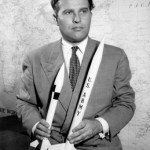Non-white names and faces in North American ice hockey are conspicuously absent from the sport at the highest level. Just over five percent of players in the North American men’s National Hockey League (NHL)—the world’s premier ice hockey league—are blacks or people of colour. Compare this to basketball or American football, eighty and seventy-five percent respectively, coloured player participation at elite-level⧼a̼⧽. The absence of non-whites in the sport goes further than that. Participation in ice hockey of non-playing staff including management is similarly heavily skewed towards whites. NHL club owners and coaches have been predominantly white, in 102 years of the League only one coach has been black. The lack of diversity is reinforced by the composition of the NHL’s fan base – over seventy-seven percent are white (cf. basketball, forty-five percent), and the white supporters of ice hockey are more conservative and wealthier than non-white fans (“The NFL Says ‘Hockey Is For Everyone’. Black Players Aren’t So Sure”, Terrence Doyle, FiveThirtyEight, Upd 19 October 2020, www.fivethirtyeight.com).
Why have non-whites in American and Canadian ice hockey always been outliers in the sport? The lack of participation by players of colour starts at the beginner’s level with youngsters not taking up the game in great numbers. The prohibitive cost is a real factor. A recent survey indicates that sixty percent of the parents of young players were forking out more than US$5,000 a year on equipment, competition fees and travel. This alone immediately disadvantages many black parents whose family finances are absorbed by the basic necessities of day-to-day living. Another significant allied factor is that blacks lack prior exposure and access to the game of ice hockey…so, unlike say with basketball or ‘gridiron’, there is for them a disconnect, an absence of cultural affiliation with the sport. With the game’s full-on physical impact aspect, playing ice hockey has long been considered the epitome of “white machismoism”. Budding non-white players tend to find this stereotype of an “affluent white culture” unwelcoming and a deterrent to the majority from progressing with the sport (“Why The Ice Is White”, Wes Judd, Pacific Standard, 14 June 2017, psmag.com). Those who do make it to the NHL (only 70-odd black players in the League’s entire history), often report a feeling of isolation and alienation from the rest of their team and the club.
Underlying all of this is the basic explanation for the out-of-kilter status quo – the persistent, overarching LCD spectre of racism. Those black players who take up the sport, starting at the junior level and proceeding to the senior leagues, have consistently found themselves the targets of racial abuse – from white fans, from opposing players, from their own white team-mates, and from their own coaches and support staffs…in recent years coaches from two NHL teams Carolina Hurricanes and Toronto Maple Leafs were sacked for racially vilifying their coloured players⧼b̼⧽.

With the impulse for diversity and inclusion embracing modern sport as a whole today, the NHL has come under increasing pressure from wider North American society to reform its sport. The response from the governing body so far has been at best tokenism, bereft of any substance, the League’s ”Hockey is for everyone” sloganeering is seen as merely hollow rhetoric when there is follow-up efforts from the League’s administrators to make meaningful reforms to rectify the imbalance. The pressure for reform in ice hockey has In fact come from non-white players within the NHL — such as Matt Dumba (left) from the Minnesota Wild who have come out on record, putting the spotlight on the racial discrimination pervading the sport, in so doing trying to drag a reluctant NHL still digging its heels in towards real action to remedy the inequitable situation (Doyle).
Footnote: Pioneer O’Ree In 1958 Willie O’Ree, was the first black player to break into the NHL, which also meant the Canadian winger was the first non-white major league hockey player to experience the avalanche of racism hurled in his direction from fans and players alike during his two seasons with the top-flight Boston Bruins side before being traded initially to the Montreal Canadiens and then back to the minor leagues. In his post-playing days O’Ree has become a diversity ambassador for ice hockey.
╚ ↜↝↜↝↜↝↜↝↜↝↜↝↜↝↜↝↜↝↜↝↜↝↜↝↜↝↜↝↜↝↜╝
⧼a̼⧽ this is not to presume that ice hockey is “Robinson Crusoe” in the exclusion of non-whites from specific sports…sports like golf (take out Tiger Woods) and swimming (often contrasted with athletics) have been massively disproportionately lite-on for black and coloured participation at the highest professional levels
⧼b̼⧽ one of the coaches even physically assaulting their black playing staff










